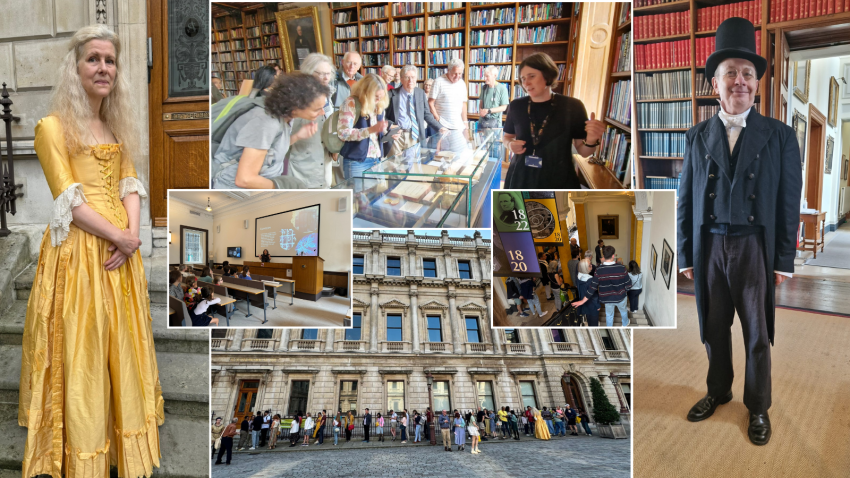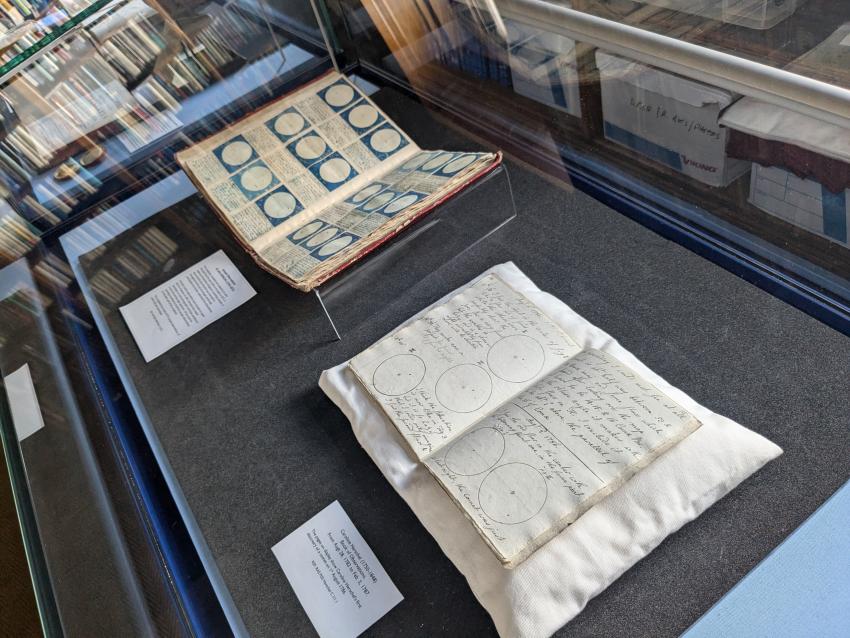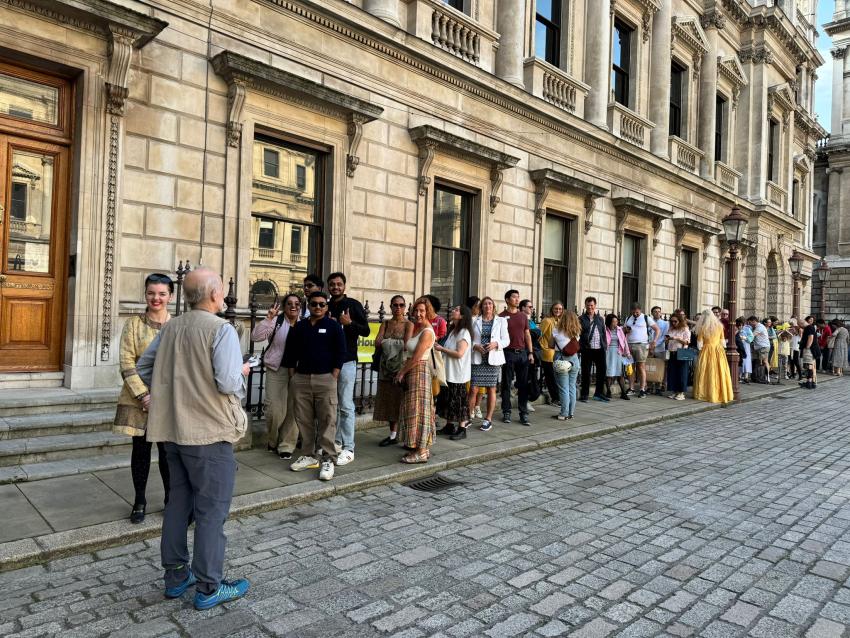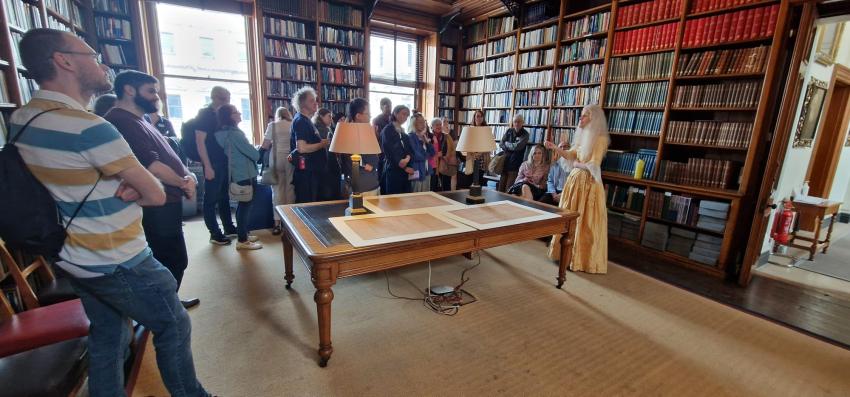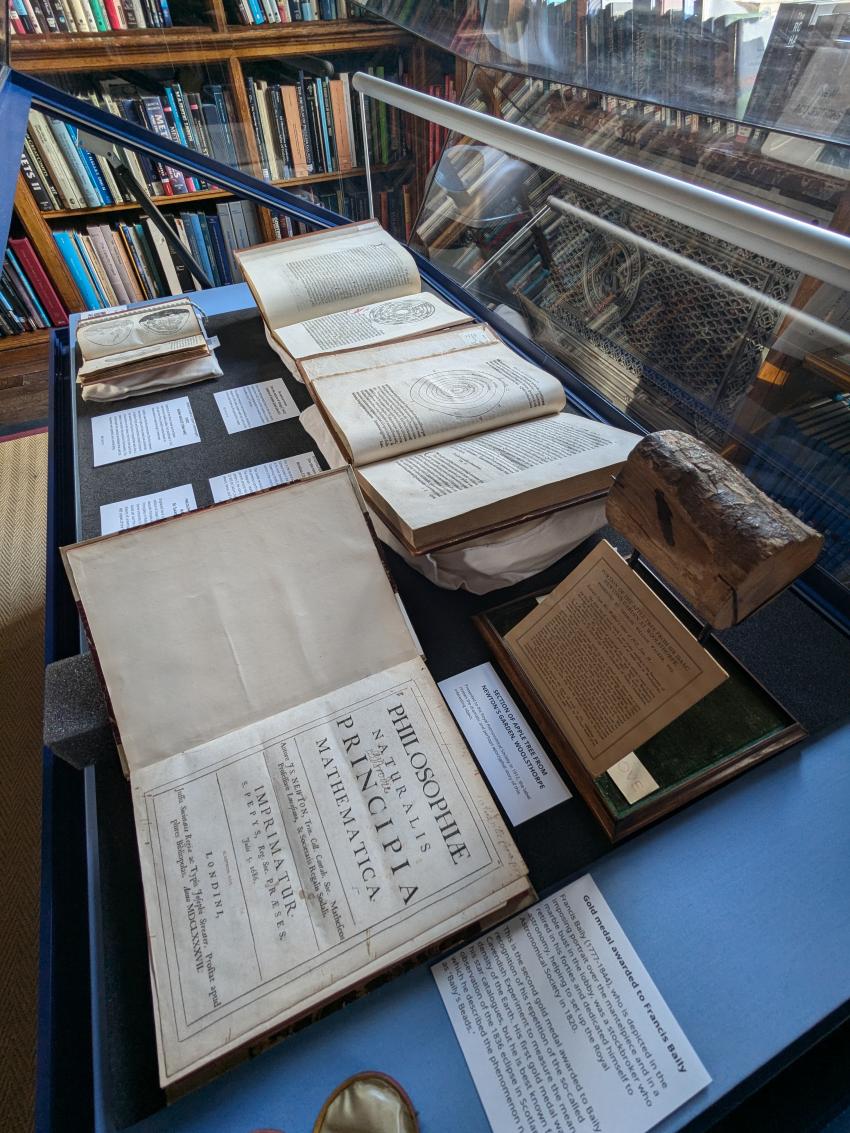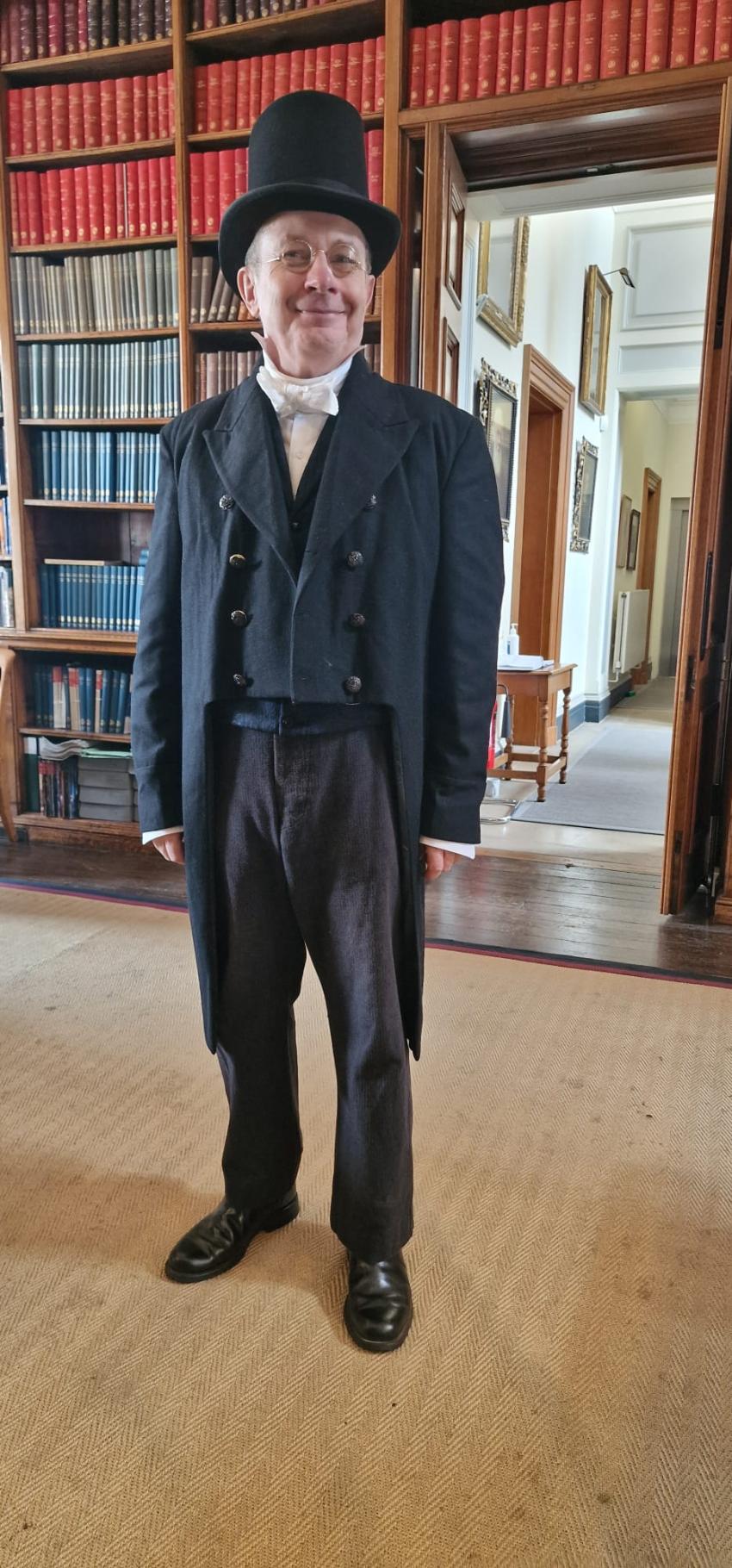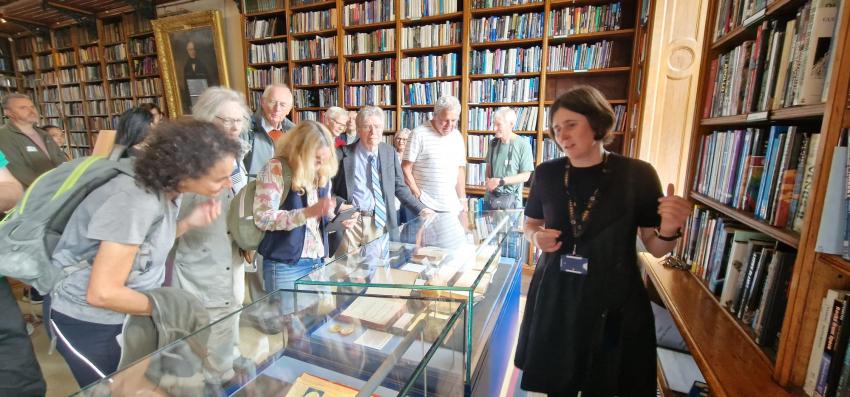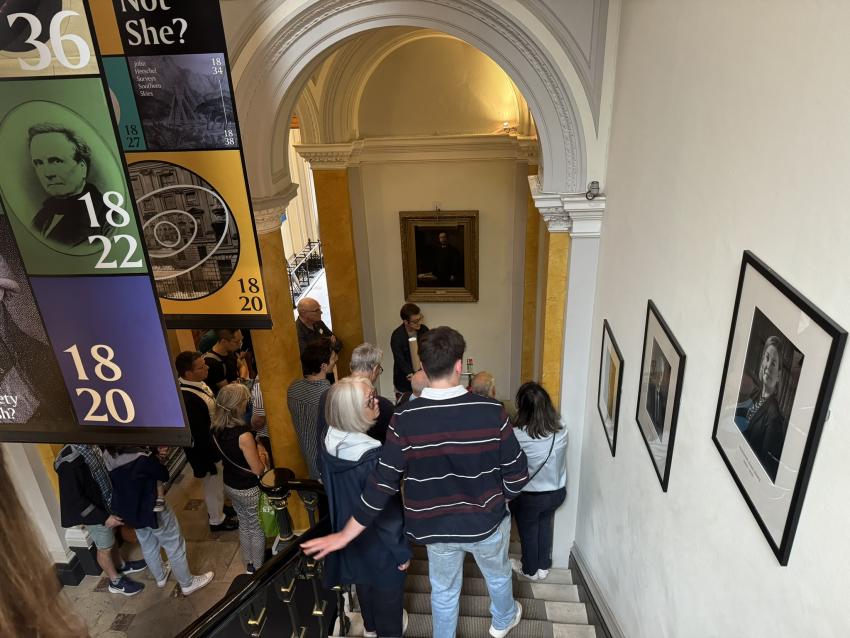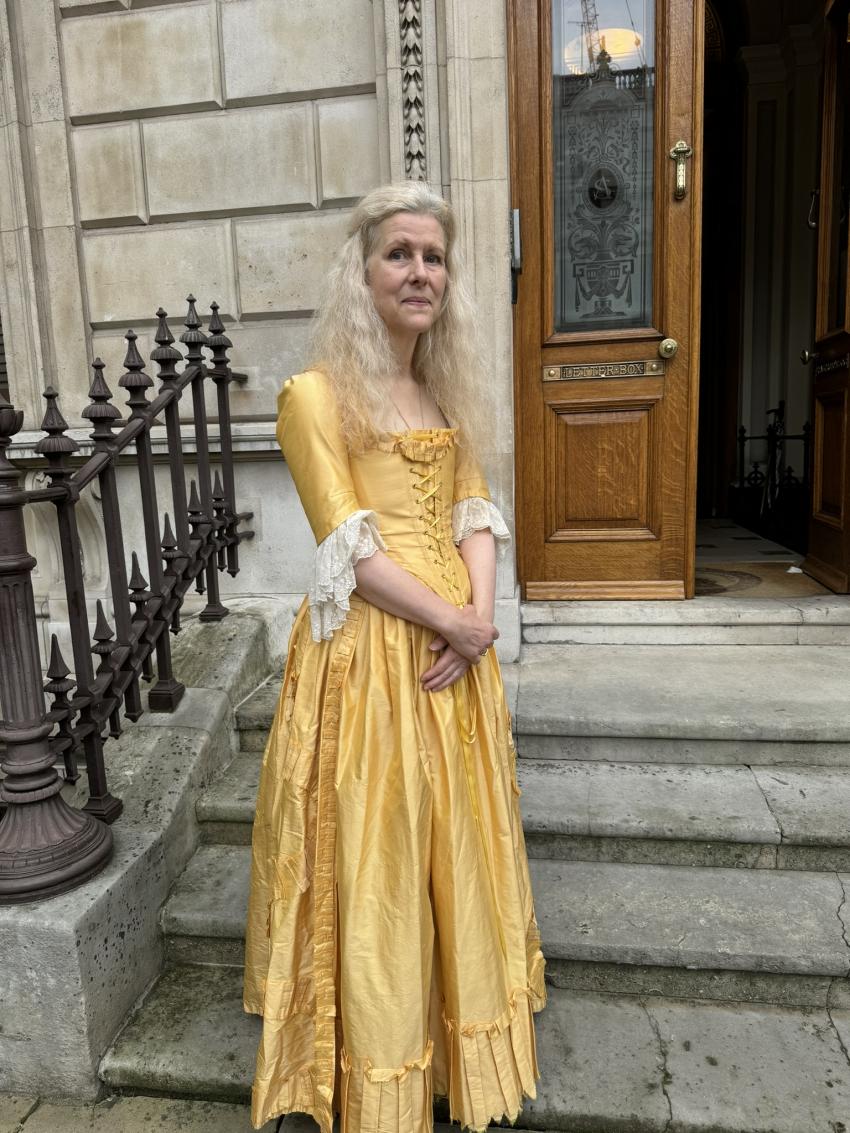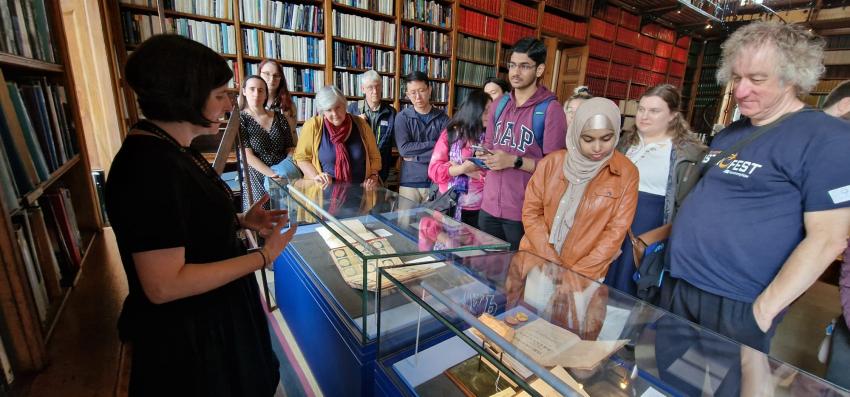Hundreds of people joined the Royal Astronomical Society (RAS) in celebrating 150 years at New Burlington House with a special Open House festival this past weekend.
Members of the public were treated to guided tours of the Society’s London HQ in Piccadilly, which has been home to the RAS, the Geological Society, the Linnean Society, the Royal Society of Chemistry and the Society of Antiquaries since the 19th Century.
This gave them a chance to see the architectural features of the building, learn about the history of astronomy and the RAS, and enjoy a special display of books, manuscripts and artefacts in the Society’s double-height, galleried library.
Actors from Spectrum Drama also brought to life some of the most fascinating discoveries in the history of science, with both famous astronomer Caroline Herschel and her nephew Sir John Herschel travelling all the way from the 19th Century to make an appearance.
There were some gems on display, including a first edition of Isaac Newton's Principia, a piece of an apple tree which fell down during a 1912 storm at Woolsthorpe, his former home, and a second edition of Copernicus's De revolutionibus. Galileo's first telescope observations of the Moon were on display in a 1653 edition of Sidereus nuncius ("Starry Messenger").
There was also our oldest printed book - from 1472 - as well as sunspot drawings by John Herschel and sketches by Caroline Herschel of the first comet she discovered on 1 August 1786.
The oldest printed book in the RAS library is De natura rerum [On the nature of things]. It is a short treatise on physics, astronomy and geography first written by Isidore of Seville in the 7th century. The RAS edition contains many woodcuts, including a diagram of the solar system with the Earth at the centre, also known as the geocentric model.
Dozens of people queued outside the RAS waiting for the Open House event to begin at 10:00 BST on Saturday 21st September, with the line going all the way back to the offices of the Society of Antiquaries of London.
In total, almost 400 visitors came along on the day, which was hosted as part of Open House London 2024 run by the charity Open City.
Children, meanwhile, got to learn about comets, stars, constellations, and the Herschels thanks to a number of fun-filled science activities.
RAS deputy executive director Dr Robert Massey said: “It was fantastic to see so many people come and visit New Burlington House to learn more about the Royal Astronomical Society and its history.
“We were blown away by the turnout, so thank you to everybody who came to see us.
“It was a joy to meet and chat to visitors young and old, all of whom seemed fascinated by the wonderful books and artefacts we had on display - and of course not forgetting the charming Caroline and John Herschel who graced us with their presence!”
The RAS moved into Burlington House 150 years ago in 1874. It originally occupied rooms in Lincoln’s Inn, and later, Somerset House.
The Society now shares the courtyard of Burlington House with the premises of four other learned societies, as well as the Royal Academy of Arts. It is the oldest astronomical society in the world and has been encouraging and promoting the study of astronomy and geophysics since it was founded in 1820.
Media contacts
Sam Tonkin
Royal Astronomical Society
Mob: +44 (0)7802 877 700
Dr Robert Massey
Royal Astronomical Society
Mob: +44 (0)7802 877 699
Notes for editors
About the Royal Astronomical Society
The Royal Astronomical Society (RAS), founded in 1820, encourages and promotes the study of astronomy, solar-system science, geophysics and closely related branches of science.
The RAS organises scientific meetings, publishes international research and review journals, recognises outstanding achievements by the award of medals and prizes, maintains an extensive library, supports education through grants and outreach activities and represents UK astronomy nationally and internationally. Its more than 4,000 members (Fellows), a third based overseas, include scientific researchers in universities, observatories and laboratories as well as historians of astronomy and others.
The RAS accepts papers for its journals based on the principle of peer review, in which fellow experts on the editorial boards accept the paper as worth considering. The Society issues press releases based on a similar principle, but the organisations and scientists concerned have overall responsibility for their content.


